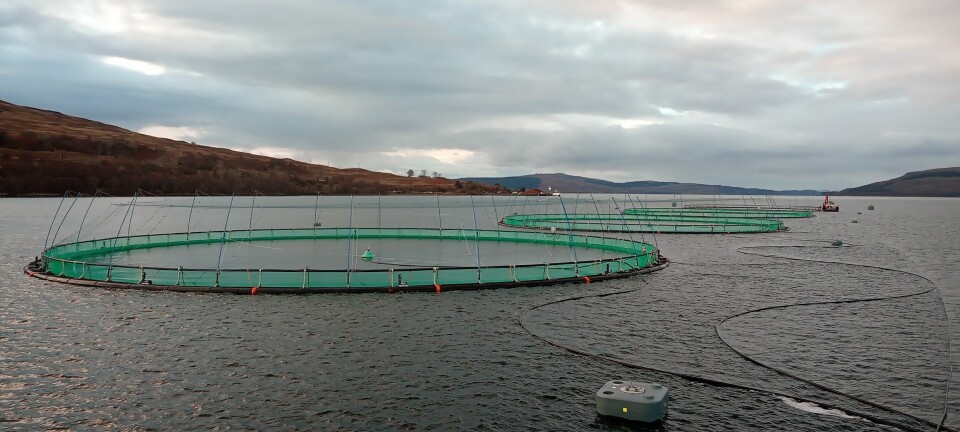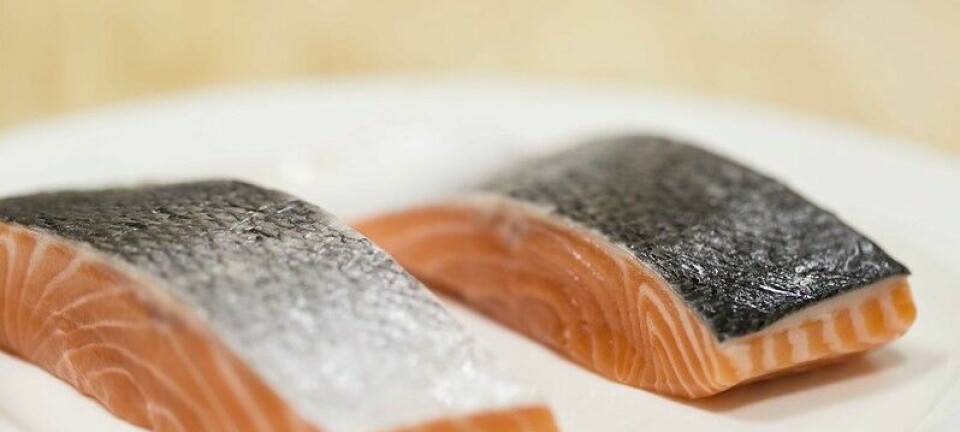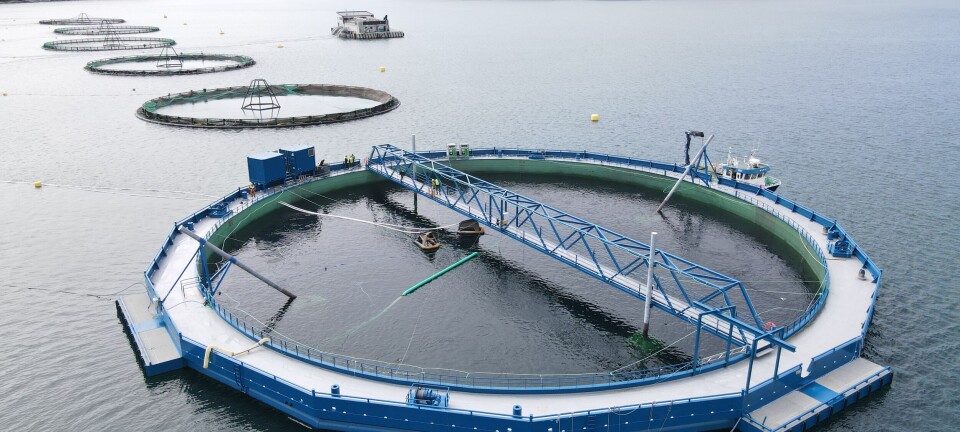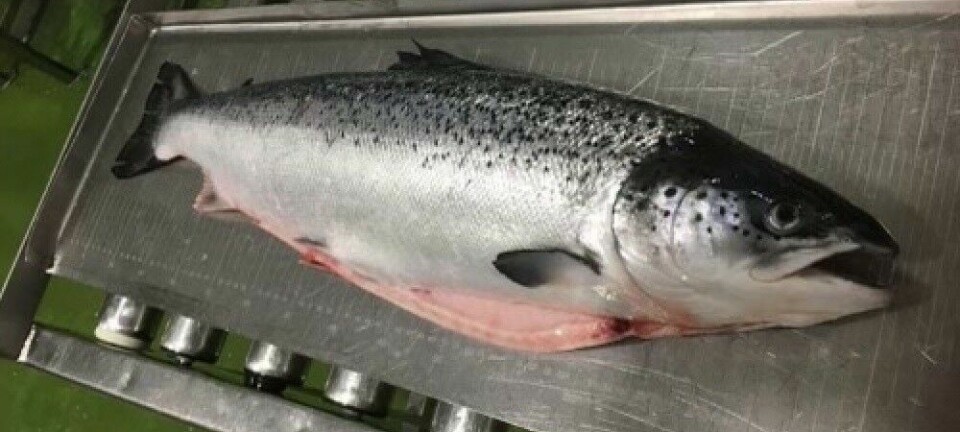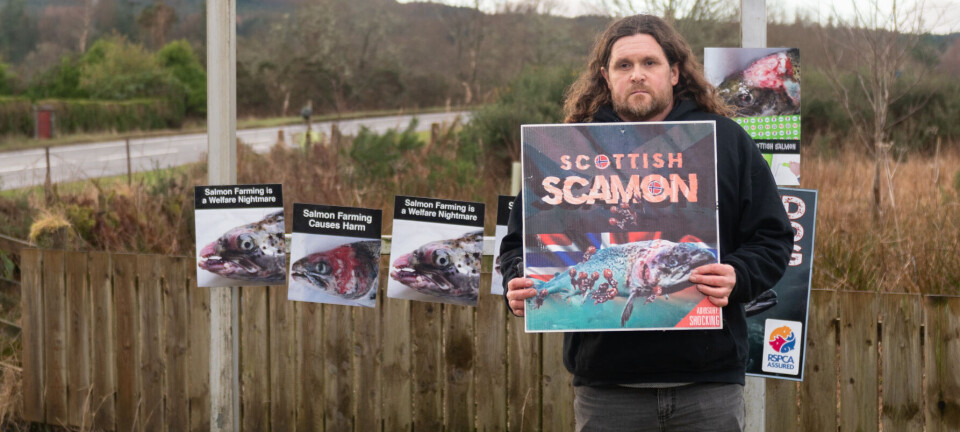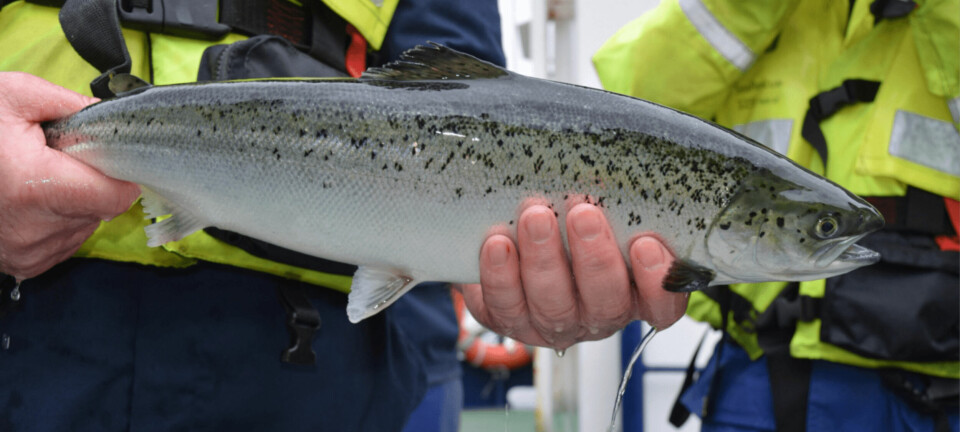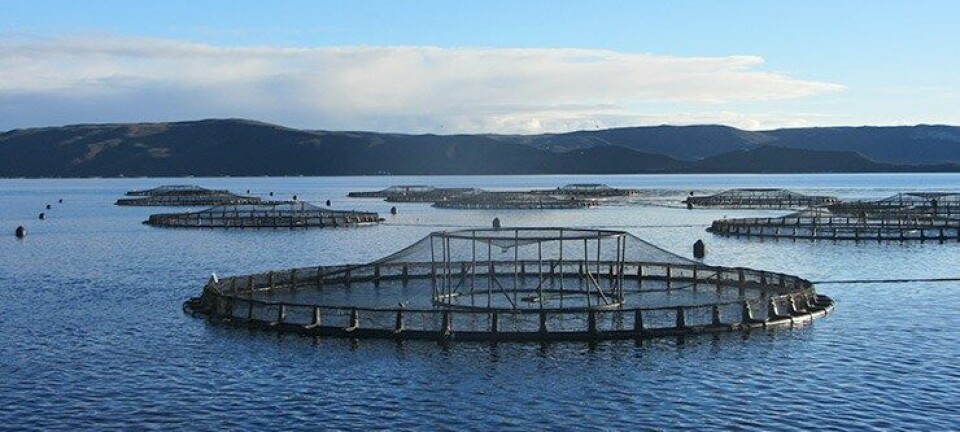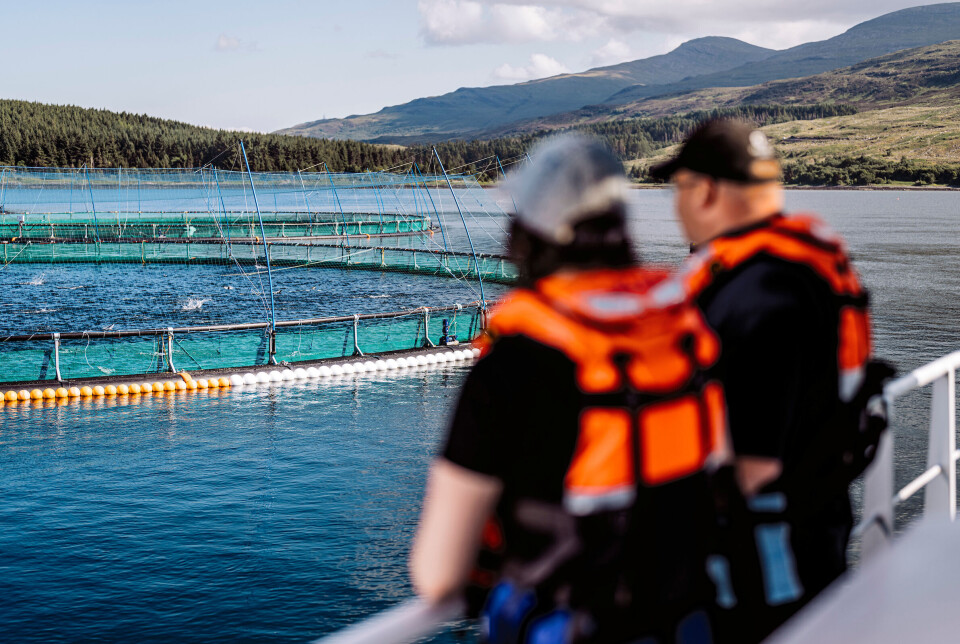
Scottish Sea Farms' first bigger pens hailed a success by site manager
Lower stocking density and better water flow and oxygen in 160-metre cages are credited with helping Fishnish team produce record volume and 6.8kg average harvest weight
Fishnish A - the first Scottish Sea Farms site to switch to larger, 160-metre-circumference pens - has reported record tonnage at an average harvest weight of 6.8kg, along with improved fish welfare and reduced seal predation.
The pens were installed as part of the salmon farming company’s strategy of using fewer but larger pens at suitable sites. This enables more efficient working practices and allows the fish to swim further from the net if seals are on site.
At Fishnish A, off Mull, ten 100m pens were replaced with four 160m pens. As well as the bigger pens and heavier moorings, Fishnish also introduced Midgard HDPE knotted nets and a new winch system, and trialled a smart feeding regime, in an investment of around £3 million.
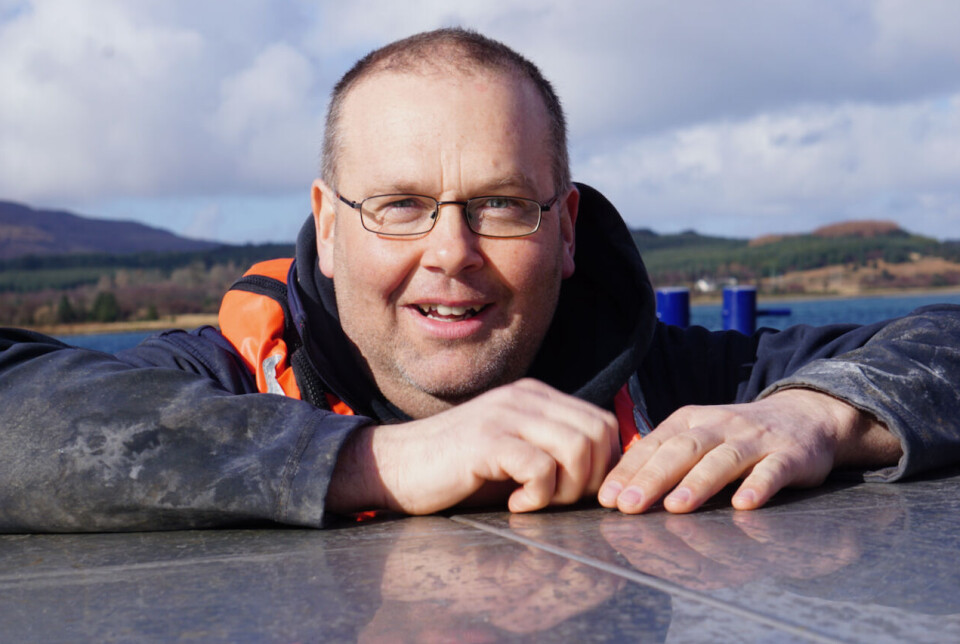
Speaking to SSF’s staff newsletter, The Source, farm manager Alastair Fraser said: “It was night and day compared to the previous set-up: so simple, less labour intensive, with less manual handling. The new winch system is another world and once we got the hang of it there was no going back.”
Ten winches
Ten winches are fitted to each walkway and operated remotely from a dedicated workboat, providing better net control and improving staff safety.
“Dealing with three instead of 10 pens (we kept one spare for handling or freshwater treating) allowed us to stay focused on the task in hand and carry out any treatments much faster.”
The combined tonnage for Fishnish A and B, where half the crop was moved after six months, was just over 4,000 tonnes, said Fraser, quite an achievement given challenges which included the micro jellyfish that affected most of the Scottish salmon sector between 2022 and 2023.
According to mortality statistics published by trade body Salmon Scotland, Fishnish A was stocked in December 2022, and had strong survival rates until September 2023, when jellyfish and plankton challenges pushed monthly mortality rates up to around 10% for three months. Efforts by SSF staff to tackle the issue then began to pay off, and survival increased, although the autumn challenges meant Fishnish A finished with a full cycle mortality rate of 25%, and Fishnish B with 15%.
Good husbandry
Fraser told The Source that he attributed the record harvest and large average harvest weight to good husbandry as well as to the bigger pens, which provide lower stocking density and better water flow and oxygen. The new feeding system, involving motorised smart spreaders, produced “fantastic results”, ensuring the whole population was fed at the same time, with feeding finished by 9.30am so the fish could go down to the depths of the pen.
With the fish harvested over summer, the Fishnish team is now preparing for the next cycle and hoping to roll out similar infrastructure at neighbouring Fishnish B. Some things will be done differently, such as increasing the ratio of wrasse in the pens to better handle sea lice, said Fraser, but bigger pens are the way forward.
“The team realised they’d had a hard crop but saw the benefits of this new way of farming and morale was definitely better.”
